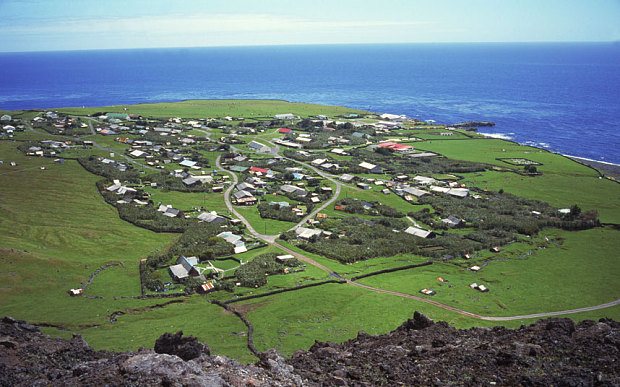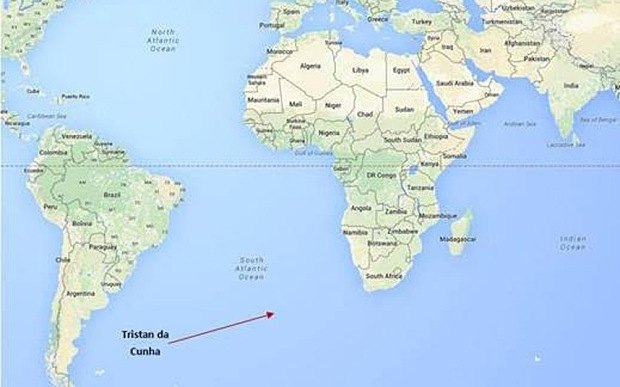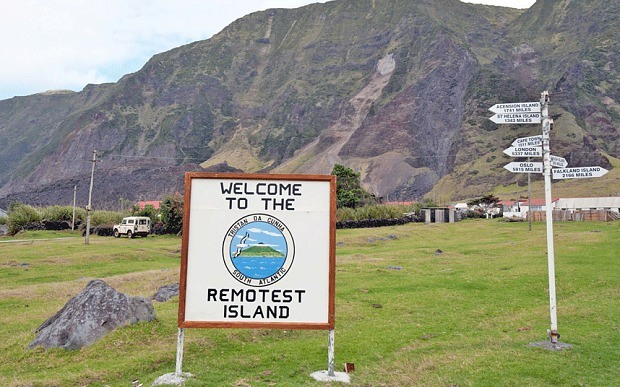 The world’s most remote inhabited island is searching for a British farmer to boost its food production and help maintain its independence.
The world’s most remote inhabited island is searching for a British farmer to boost its food production and help maintain its independence.
Tristan da Cunha, which lies midway between Africa and South America, has a population of 265 people, and officials fear inhabitants aren’t equipped with the necessary skills to keep it self-sufficient.
The island has around 1,000 acres of poor grazing land for 300 cattle and 500 sheep, and its biggest crop is potatoes. Officials are now searching for a farmer who can transform the land to harvest fruits, vegetables and other crops in order to reduce its reliance on imported foodstuffs.
An advertisement has been listed on the jobs page of the UK’s National Farmers’ Union (NFU), an organization that represents 55,000 farmers across England and Wales. The salary has not been disclosed.
“This is the most interesting and unique opportunity that I have seen advertised on NFU Job Pages to date,” said the NFU’s Alan Brown. “I hope there is a farmer out there who seizes the opportunity to take on this unique challenge and bring a flavor of British farming to the world’s most remote inhabited island.”
 Tristan da Cunha is a British overseas territory, which is why the island is advertising for a farmer from the UK. The island’s economy is largely dependent on lobster exports, with limited revenue from tourism. The island only got its own postcode 10 years ago.
Tristan da Cunha is a British overseas territory, which is why the island is advertising for a farmer from the UK. The island’s economy is largely dependent on lobster exports, with limited revenue from tourism. The island only got its own postcode 10 years ago.
Known by locals as Tristan, it has a north-to-south length of just seven miles and an area of 37.8 square miles.
 Potential candidates will have to be content with their own company. The island is only accessible 60 days a year, limiting trips in and out. Even so, their nearest outside neighbors will be 1,511 miles away in South Africa, and they will have to endure a six-day boat journey to get to Tristan.
Potential candidates will have to be content with their own company. The island is only accessible 60 days a year, limiting trips in and out. Even so, their nearest outside neighbors will be 1,511 miles away in South Africa, and they will have to endure a six-day boat journey to get to Tristan.
But for whoever takes on the challenge, there is the promise of an island shop, a pub, cafe, dance hall, swimming pool and museum. Accommodation and transport to the island is free.
All Tristan families are farmers, owning their own stock and tending potato patches and settlement gardens around houses built by themselves or their ancestors, according to the island’s website.
The island was discovered in 1506 but remained uninhabited until it was used by U.S. whalers in the late 1700s. The British navy stationed a garrison there during Napoleon’s exile on St. Helena and, when it was withdrawn, three men stayed behind and became the founders of the present settlement.
All land is communally owned, and stock numbers are strictly controlled to conserve pasture and to prevent better-off families accumulating wealth. Puchasing land is limited to outsiders.
Source: The Telegraph